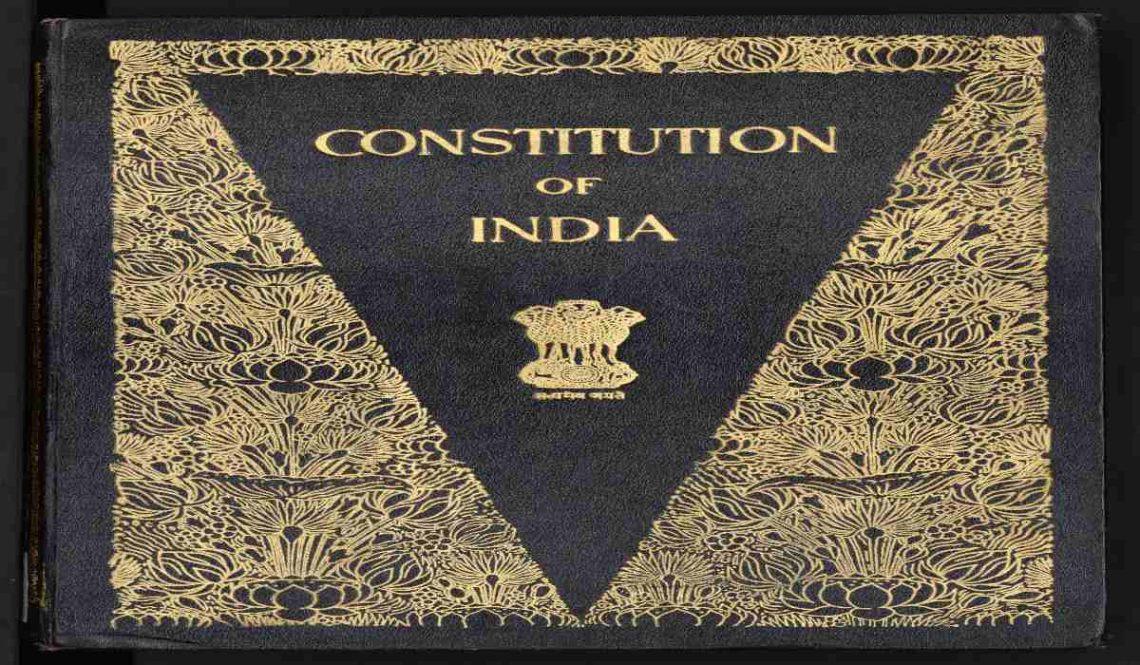
10 Must-Know Facts About the Constitution of India
As India celebrates its 76th Republic Day on January 26, 2025, it marks 75 years since the Constitution came into effect in 1950. The Constitution of India, adopted on November 26, 1949, and effective from January 26, 1950, is the supreme legal document of the country. It outlines the framework for the political code, structure, procedures, powers, and duties of government institutions, and sets out fundamental rights, directive principles, and the duties of citizens. It is the longest written national constitution in the world.
The Constitution was drafted by the Constituent Assembly of India, which was formed on December 9, 1946. The assembly had 389 members initially, which declined to 299 after partition. The drafting committee was appointed on August 29, 1947, with Dr. B. R. Ambedkar as the chairman. The assembly adopted the Constitution on November 26, 1949, and it came into force on January 26, 1950. The Constitution originally had 395 articles in 22 parts and 8 schedules. Over time, it has been amended multiple times, and as of now, it contains 470 articles grouped into 25 parts, with 12 schedules.
Also Read: Republic Day 2025: All You Need to Know
The Constitution is a living document, allowing for amendments to address the evolving needs of the nation. The Constitution of India is celebrated annually on January 26 as Republic Day, commemorating the day it came into effect. This day is observed with various events and ceremonies across the country, reflecting the nation’s commitment to democracy and the rule of law. In this blog, we will take you through the top 10 facts about the Constitution of India. Keep reading!
Celebrating 76th Republic Day.On Jan. 26, 1950 Constitution of India came into force.
— Mani Bhavan Mumbai (@GandhiInMumbai) January 25, 2025
Original Constitution of India was in English hand written in italic style by calligrapher Prem Behari Narain Raizada. The Hindi calligraphy was done by Vasant Krishan Vaidya. #RepublicDay pic.twitter.com/OyuuvXk7eV
10 Amazing Facts About the Constitution of India – Celebrating 75 Years of Republic
- Longest Written Constitution: The Indian Constitution is the longest written constitution globally, containing approximately 146,385 words.
- Handwritten in English and Hindi: The original manuscript of the Constitution was handwritten in both English and Hindi, featuring beautiful calligraphy and design.
- Adopted but Came into Force Later: The Constitution was adopted on November 26, 1949, but it came into force on January 26, 1950, marking the day India became a republic.
- World’s Largest Democracy: India is the largest democracy in the world, and the Constitution provides the framework for its democratic governance.
- Inspiration from Various Sources: The Constitution draws inspiration from various sources, including the Government of India Act 1935, the British Parliament Act, the Irish Constitution, and the U.S. Constitution.
- Preamble Inspired by the U.S. Constitution: The Preamble of the Indian Constitution was inspired by the Preamble of the U.S. Constitution, reflecting the ideals of justice, liberty, and equality.
- Universal Adult Franchise: The Constitution grants universal adult franchise, allowing every citizen above the age of 18 to vote, irrespective of gender, caste, or religion.
- Secular State: India is declared a secular state by the Constitution, ensuring equal treatment of all religions and freedom of religious practice.
- Independent Judiciary: The Constitution establishes an independent judiciary, with the Supreme Court at its apex, to uphold the rule of law and protect fundamental rights.
- Amendment Provisions: The Constitution provides a detailed process for amendments, allowing for changes to address the evolving needs of the nation.
Honorable Chief Minister Shri @myogiadityanath ji paid tribute to the architect of the Constitution, Baba Saheb Bhimrao Ambedkar ji and the Indian Constitution. #TransformingUP pic.twitter.com/XnP5gzZbth
— Kunal Vimal 🇮🇳 (@kvQuote) January 24, 2025
Takeaway
As we celebrate 75 years since the Constitution of India came into effect, it’s clear that this important document has been key in shaping our country’s democracy. Its ability to adapt has helped India grow and change over the years. Learning about these facts not only honors the Constitution’s legacy but also reminds us of the values of justice, liberty, and equality that continue to define India today.
Frequently Asked Questions (FAQs)
What is the Constitution of India?
The Constitution of India is the supreme law of the country. It sets the rules for how the government works and defines the rights and duties of citizens. The constitution was adopted on November 26, 1949, and came into force on January 26, 1950. It is the longest-written constitution in the world.
Who wrote the Constitution of India?
The Constitution was written by the Constituent Assembly of India, which began work in 1946. The drafting committee, led by Dr. B. R. Ambedkar, completed it in 1949. The Constitution became effective on January 26, 1950.
How many articles and schedules are in the Constitution?
The Constitution originally had 395 articles and 8 schedules. After several amendments, it now has 470 articles divided into 25 parts and 12 schedules. It is a flexible document that can be changed when needed.
What is the significance of January 26 in India’s Constitution?
January 26 is celebrated as Republic Day, as it marks the day the Constitution came into effect. It is a day of national pride, with ceremonies and events across India to honor the Constitution and its values.
What are some key features of the Indian Constitution?
- Longest Constitution: It is the longest written constitution in the world.
- Written in English and Hindi: The original Constitution was handwritten in English and Hindi.
- Inspired by Other Countries: It takes ideas from other countries’ laws, like the UK and the USA.
- Universal Voting Rights: Every adult citizen has the right to vote.
- Secular State: The Constitution ensures freedom of religion for all.
- Independent Courts: The Constitution gives India an independent judiciary.
- Amendment Process: It can be changed to meet the country’s needs over time.
Why is the Constitution of India called a living document?
The Constitution is called a living document because it can be updated through amendments to meet changing needs and circumstances in India.
What is the Preamble of the Indian Constitution?
The Preamble is a short introduction that outlines the core values of the Constitution. It declares India as a republic, promises justice, equality, and liberty for all citizens, and ensures freedom for every individual.
(Featured Image taken from https://www.loc.gov/resource/llscd.57026883/?sp=1)
Khushi Jha
I am Khushi Jha, a proud alumna of Delhi University with a degree in History and Political Science. My fascination with the events that have shaped our world drives me every day. Currently, I am pursuing my Master’s in History, diving even deeper into global dynamics and the incredible heritage of India. I firmly believe that India's rich heritage deserves wider recognition. I strive to bring its stories to the forefront, ensuring they are celebrated and acknowledged on a global stage. I have written extensively across various niches, including fashion, health, lifestyle, real estate, hospitality, amongst others. In my free time, you’ll find me immersed in books, both fiction and non-fiction, or simply enjoying some much-needed rest.
You May Also Like

Khelo India Water Sports Festival 2025 to Begin at Dal Lake in Jammu & Kashmir
August 20, 2025
IPL 2025: How Cricket is Boosting Sports Tourism in India
March 19, 2025


